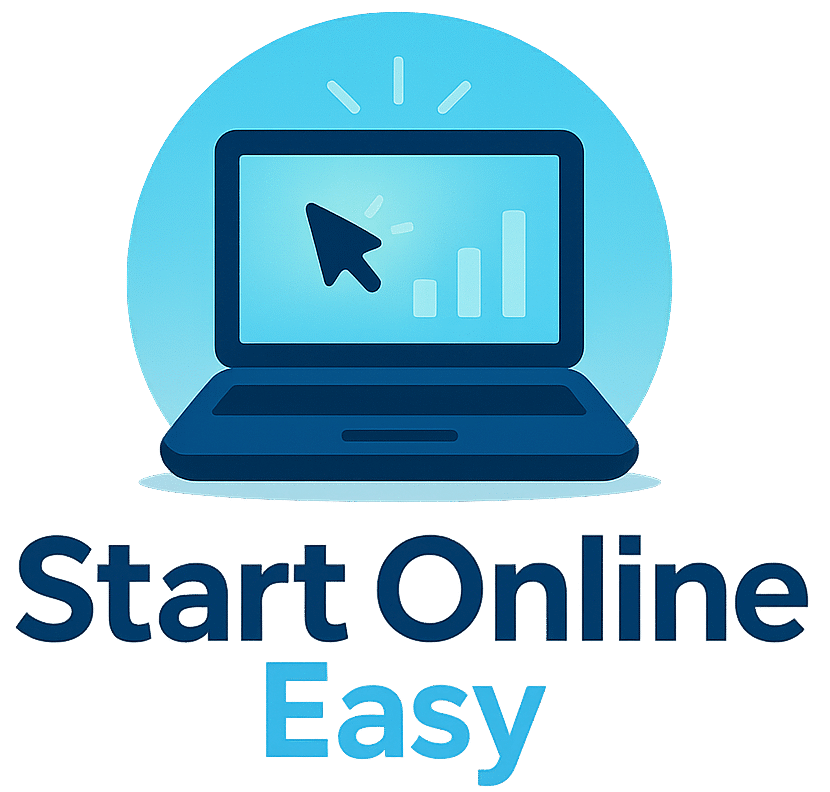Building your online brand from scratch can feel a bit like trying to solve a puzzle with pieces scattered everywhere. I know firsthand how challenging it feels when you’re getting started, especially in a world where everyone seems to have a polished brand presence already. I’m here to share what’s worked for me and what I’ve seen help others, breaking the steps down so you can actually see progress.

What Does It Mean To Have An Online Brand?
An online brand is just how people see you or your business on the internet. It covers everything, from your logo colors to the way you talk on social media and the value people get from spending time with your content or services. Building a brand isn’t just about slick graphics or catchy taglines; it’s also about the story you’re telling and the experience you create for your audience, no matter the size.
Most strong brands stick in your mind because they’re clear, trustworthy, and consistent. It’s super important for anyone who wants to stand out online, whether you’re running a side hustle, freelancing, or building a full business. Having a solid online presence is pretty handy for establishing authority and attracting the right crowd. Plus, a brand helps you make a lasting impression and create connections with your target audience.
Getting Started: Building Your Foundation
Before putting anything out there, it’s worth asking some honest questions about what you want people to know about you and how you want to make them feel. Building a foundation means getting clear on who you are, what your business stands for, and who you want to talk to. Taking the time to put these elements down will pay off as your brand grows.
- Find Your “Why”: What motivates your work or content? Why are you showing up online?
- Clarify Your Audience: Who are you hoping to reach? Try to picture your ideal follower, client, or customer. What are they interested in? Where do they spend time online?
- Pick Your Unique Angle: Everyone brings their own spin to the table. What’s yours? This doesn’t need to be big and bold; sometimes a tight focus is enough to make you memorable.
Writing this out for yourself keeps you focused when building the next steps. Lots of successful online brands, from small creators to bigger businesses, start by nailing these basics. The effort up front helps keep your messaging clear and your actions intentional.
Key Steps To Set Up Your Online Brand
Building a simple, recognizable presence takes a bit of planning. Here are the parts you’ll want to set up early on:
- Choose A Name And Visuals: Pick a memorable name that reflects what you do. Design a simple logo and basic color palette. Free tools like Canva make this pretty doable even if you don’t have a graphic design background.
- Secure Your Web Real Estate: Grab the matching domain name and social media handles if you can. Consistency makes it way easier for people to find you.
- Build A Home Base, Your Website: Even one page that explains who you are and how you can help is a solid starting point. This adds a sense of legitimacy to your brand right from the jump.
- Set Up Social Profiles That Make Sense: Focus on one or two platforms where your audience already spends time. This keeps you from spreading yourself too thin, and helps build momentum early on.
Getting these pieces in place makes a brand feel “real,” both to you and to anyone stumbling upon you for the first time. Remember to keep things simple as you go. Overcomplicating, especially in the early stages, can be overwhelming.
Brand Voice And Messaging: Making Your Vibe Consistent
The way you talk online says a lot about you. This is often called “brand voice” and it’s honestly where a lot of people overthink. I always suggest writing how you’d speak to a friend, with a touch of polish so it feels professional yet approachable.
- Figure Out Your Core Messages: What are the one to three main ideas you want people to remember after seeing your website or socials?
- Create A Simple Tagline: A short phrase that explains what you do and why it matters. This isn’t just for your website; it works for social bios or email signatures too.
- Consistency Counts: Over time, using the same language, colors, and style helps you look more legit and memorable.
A good brand voice not only helps people recognize you, it also builds trust and makes your content that much more shareable. When people know what to expect, they’re far more likely to return or recommend you to others.
Tips For Spreading The Word And Growing Your Audience
Shouting into the void isn’t much fun, so here’s how to slowly but surely build your audience from zero.
- Post Regularly: You don’t have to create new stuff every day. A steady rhythm is really important. Even one eye-catching post a week can do the job if you’re consistent.
- Get Involved Genuinely: Respond to comments, answer DMs, and comment on other people’s stuff in a helpful way. Making real connections is a pretty direct way to get noticed and grow.
- Team Up With Similar Creators: Join forces with people who have related but not identical audiences. Guest blog posts, podcast interviews, or casual Instagram Lives can expand your reach in a non-spammy way.
- Offer Value Upfront: Free tips, handy advice, or even a downloadable guide all show you care about your audience’s needs while letting your expertise pop.
Getting your brand out there is honestly just as much about helping others as it is about sharing your story. Over time, people will remember brands that made a difference for them.
What To Watch Out For When Building An Online Brand
Making your brand visible comes with a few speed bumps. Here are a few headaches I’ve seen (and felt myself):
- Trying To Be Everywhere: Spreading your energy across every platform quickly burns you out. Prioritizing the sites where your target audience spends time is a much better use of resources.
- Copying Others Too Closely: It’s tempting to imitate someone successful, but losing your own vibe in the process often makes your brand fade into the background. Take inspiration, but put your own twist on it.
- Inconsistent Posting: Gaps in posting make it harder for people to trust you or remember what you’re about. A simple posting plan solves most of this problem.
- Ignoring Analytics: Tracking what’s working and what isn’t lets you adjust your game plan, rather than guessing what your audience likes.
Name And Visual Identity
Picking a brand name and logo feels like a big job, especially if you’re building a personal brand with your own name. Simple, unfussy usually works best for most people. Think of easy to read logos and straightforward names. Tools like Namechk and Canva make this much less of a pain than you might expect.
Consistency Across Platforms
Repeating your look and messaging is a huge win. Use the same profile picture, color scheme, and basic “about me” story across everywhere you show up online. That way, someone who finds you on Twitter can spot you on LinkedIn, Instagram, or your site quickly.
Managing Negative Feedback
Even when you’re just starting, you might get critical comments or a random troll. I always recommend responding thoughtfully or ignoring when necessary, but never taking it to heart. Being professional keeps your brand looking strong, and protects your own confidence, too.
Pro-Level Moves: Taking Your Brand Up A Notch
Once you have the basics sorted, there are a few things you can do to take your brand up a notch:
Start An Email List: Collecting email addresses (with permission, of course) lets you reach your audience directly. Simple lead magnets like tip sheets or exclusive discounts can help you build faster and keep your crowd engaged.
Try Branded Graphics: Having templates for quote posts, infographics, or even banners helps you keep that visual consistency on point.
Gather Social Proof: Screenshots of positive feedback, testimonials, or even case studies add a layer of trust you just can’t buy. Consider creating a section on your site or share them in your social stories.
Continually learning and testing ideas helps you spot what actually moves the needle for your brand. Being willing to tweak and grow as you learn is key to staying visible and relevant.
Real-World Applications For A Strong Online Brand
Having a clear online brand isn’t just for influencers. Freelancers, job seekers, small business owners, and creators all get a big boost:
- Freelancers: Clients are way more likely to reach out to people whose brand lines up with what they need. A good online brand can make you the obvious choice.
- eCommerce Shops: Stores with a recognizable voice and look are easier for customers to remember and talk about with friends.
- Side Hustlers: Even small side projects get more traction with a polished presence that’s easy to share or find online.
Building your brand also opens doors, bringing new opportunities, connections, and the chance to do work that actually feels meaningful.
Frequently Asked Questions
Question: Do I need a website right away?
Answer: Not always. If you have the time and budget, even a simple one-page site is handy. But you can start on social media and add a website when you’re ready.
Question: How long does it take to see results?
Answer: Brand-building takes time. Most people start seeing small wins (like new followers or first asks) within a few months if they stick with it. Consistency makes a big difference.
Question: What if I change direction later on?
Answer: Brands mix it up! Just be upfront with your audience and update your platforms so people know what to expect from the new direction. People appreciate honesty and clarity.
Final Thoughts
Building an online brand from scratch isn’t about big budgets or fancy campaigns. It’s about showing up, being yourself, and sharing things people care about. With some planning, steady effort, and a willingness to learn as you go, the foundation you build now can grow into something that gets you noticed and remembered for all the right reasons.
